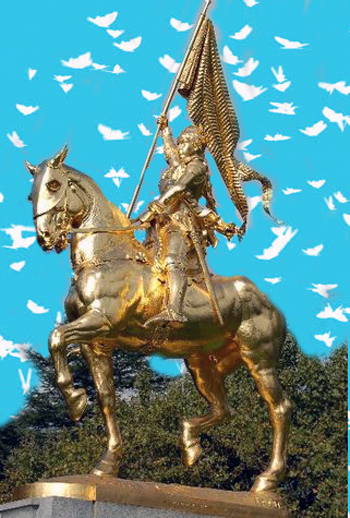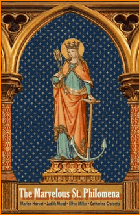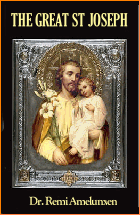Symbolism
 |
 |
 |
 |
 |
 |
 |
The Butterfly, Symbol of the Soul
Butterflies, which belong to the order Lepidoptera, are often described as the "glories of nature." Some 28,000 species of butterflies exist, most of them in tropical regions.
The butterfly's visible characteristics are grace and beauty. Because of its light, airy flight and its dramatic life cycle, the butterfly nearly universally is a symbol of the human soul.
 For example, in Classical Greece and Rome, it was believed that the soul left the body in the form of a butterfly. It was Aristotle who gave the butterfly the name psyche, the Greek word for soul. The resurrected goddess Psyche was often depicted as a young woman with butterfly wings.
For example, in Classical Greece and Rome, it was believed that the soul left the body in the form of a butterfly. It was Aristotle who gave the butterfly the name psyche, the Greek word for soul. The resurrected goddess Psyche was often depicted as a young woman with butterfly wings.
The Middle Ages "christianized" the symbolic content of many animals and plants because the medieval man looked at Creation to find some representation of the Creator. It is natural that many Saints and teachers found in the butterfly one of the finest symbols of the Resurrection and of eternal life.
Thus, in Christian art, the caterpillar, chrysalis and butterfly came to signify the life, death and resurrection of Our Lord Jesus Christ. Some Renaissance images of the Christ Child show a butterfly alighting on his hand.
The metamorphosis in the life of the butterfly also came to represent the change and transformation of the faithful Catholic soul. A butterfly starts as a lowly caterpillar that crawls on the earth; then, it metamorphoses to a chrysalis hibernating in a cocoon; finally, it emerges as a beautiful flying insect. Its brilliant colors and flickering flight link it to the sun, light and ascent into the spiritual realm.
These stages in the life history of the butterfly were transposed onto the life of the Catholic, who after Baptism, emerges to a new life.
Another more common interpretation applies the cycle to the three stages of man: First, is the crawling larva, representing man's condition on this earth.
Second, is the chrysalis where the larva hides in its cocoon, seeming lifeless. This represents the body of the man in the grave.
 Third, however, the pupa bursts its outer shell, emerges and soars heavenward with a beautiful new body. This is to remind us that all the dead at the Final Judgment will raise up, and the soul and glorified body of the just will be reunited to dwell forever in Heaven.
Third, however, the pupa bursts its outer shell, emerges and soars heavenward with a beautiful new body. This is to remind us that all the dead at the Final Judgment will raise up, and the soul and glorified body of the just will be reunited to dwell forever in Heaven.
On occasion, swarms of butterflies are interpreted as a sign of Heaven's blessing. One instance was the swarms of white butterflies that were reported to surround the standard of St. Joan of Arc during the victorious charges she led in battle. Witnesses said that she was luminous in battle, with a kind of light that glinted off her armor. Her enemies spoke of clouds of butterflies following in her wake.
Here is another instance of butterflies being associated with the Maid of Orleans: The Maid Joan was riding through the countryside at Château-Thierry with King Charles VII. The crowds of people lining the route witnessed the extraordinary spectacle of clouds of butterflies encircling her standard. This was the same great standard she always carried into battle to inspire the army to fight and achieve victory.
Other languages
To divert a bit, we find that, while the symbolism of the butterfly is almost universal, the word in other languages is as fluttery as the insect itself.
Our own word comes from the Old English buttorfleoge (buttor= butter and fleoge=fly).This was probably based on the German legend that butterflies were fairies that would consume the cream or butter that was left uncovered. In fact, the German word schmetterling comes from schmetten (cream).
Spanish children used to sing a song with the verse "María pósate, descansas en el suelo," or "Mary, alight, rest on the ground." From María pósate came the Spanish word for butterfly, mariposa. The Portuguese borboleta loosely translates to "beautiful little thing," from the Latin belbellita coming from bellus, beautiful. And the Italian farfalla, whose origin is uncertain, certainly precedes the farfalle or "bow tie" pasta that looks like butterflies.
The Danish sommerfugle means "summer bird," which is how they considered the delightful butterfly that migrates in the winter. Modern Greeks have abandoned the ancient Greek psyche for butterfly, and instead use the word petaloúda, from the word pétalon or petal. Thus, butterflies are flying flower petals, an apt and poetic description.
The French took up the melodic word papillon, from the Latin, papilio, meaning butterfly or moth. Certainly this whimsical fairy-like insect merits that lovely sounding name.


The butterfly's visible characteristics are grace and beauty. Because of its light, airy flight and its dramatic life cycle, the butterfly nearly universally is a symbol of the human soul.

The butterfly is called one of the 'glories of nature'
The Middle Ages "christianized" the symbolic content of many animals and plants because the medieval man looked at Creation to find some representation of the Creator. It is natural that many Saints and teachers found in the butterfly one of the finest symbols of the Resurrection and of eternal life.
Thus, in Christian art, the caterpillar, chrysalis and butterfly came to signify the life, death and resurrection of Our Lord Jesus Christ. Some Renaissance images of the Christ Child show a butterfly alighting on his hand.
The metamorphosis in the life of the butterfly also came to represent the change and transformation of the faithful Catholic soul. A butterfly starts as a lowly caterpillar that crawls on the earth; then, it metamorphoses to a chrysalis hibernating in a cocoon; finally, it emerges as a beautiful flying insect. Its brilliant colors and flickering flight link it to the sun, light and ascent into the spiritual realm.
These stages in the life history of the butterfly were transposed onto the life of the Catholic, who after Baptism, emerges to a new life.
Another more common interpretation applies the cycle to the three stages of man: First, is the crawling larva, representing man's condition on this earth.
Second, is the chrysalis where the larva hides in its cocoon, seeming lifeless. This represents the body of the man in the grave.

Butterflies were reported to follow the standard of St. Joan of Arc
On occasion, swarms of butterflies are interpreted as a sign of Heaven's blessing. One instance was the swarms of white butterflies that were reported to surround the standard of St. Joan of Arc during the victorious charges she led in battle. Witnesses said that she was luminous in battle, with a kind of light that glinted off her armor. Her enemies spoke of clouds of butterflies following in her wake.
Here is another instance of butterflies being associated with the Maid of Orleans: The Maid Joan was riding through the countryside at Château-Thierry with King Charles VII. The crowds of people lining the route witnessed the extraordinary spectacle of clouds of butterflies encircling her standard. This was the same great standard she always carried into battle to inspire the army to fight and achieve victory.
Other languages
To divert a bit, we find that, while the symbolism of the butterfly is almost universal, the word in other languages is as fluttery as the insect itself.
Our own word comes from the Old English buttorfleoge (buttor= butter and fleoge=fly).This was probably based on the German legend that butterflies were fairies that would consume the cream or butter that was left uncovered. In fact, the German word schmetterling comes from schmetten (cream).
Spanish children used to sing a song with the verse "María pósate, descansas en el suelo," or "Mary, alight, rest on the ground." From María pósate came the Spanish word for butterfly, mariposa. The Portuguese borboleta loosely translates to "beautiful little thing," from the Latin belbellita coming from bellus, beautiful. And the Italian farfalla, whose origin is uncertain, certainly precedes the farfalle or "bow tie" pasta that looks like butterflies.
The Danish sommerfugle means "summer bird," which is how they considered the delightful butterfly that migrates in the winter. Modern Greeks have abandoned the ancient Greek psyche for butterfly, and instead use the word petaloúda, from the word pétalon or petal. Thus, butterflies are flying flower petals, an apt and poetic description.
The French took up the melodic word papillon, from the Latin, papilio, meaning butterfly or moth. Certainly this whimsical fairy-like insect merits that lovely sounding name.


Posted September 15, 2017
______________________
______________________











